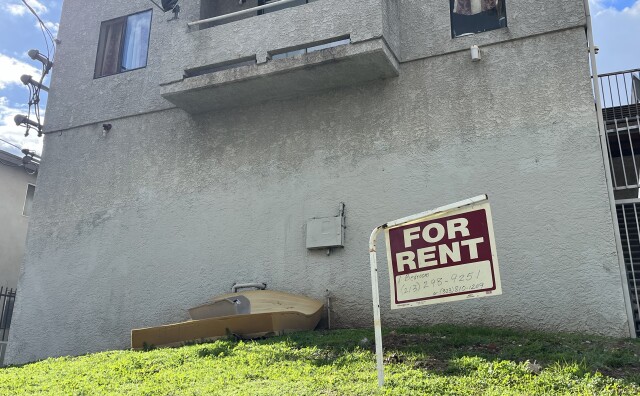More Than 69,000 People Are Experiencing Homelessness in LA – An Uptick From Last Count

Despite a massive influx of new funding and increased efforts to reverse the crisis, the unhoused population in Los Angeles continues to grow.
On Thursday, the L.A. Homeless Services Authority (LAHSA) released the long-awaited results from the 2022 count, the region’s first since the COVID-19 pandemic began.
The new numbers show that on any given night, an estimated 69,144 people are experiencing homelessness across L.A. County. That represents a 4.1% increase since the last count took place in 2020. The unhoused population also increased by 1.7% in the city of L.A.
Officials said these numbers show a “flattening of the curve” compared with the sharper increases observed in previous years. From 2018 to 2020, the unhoused population grew by 25.9% in the county, and by 31.9% in the city of L.A.
-
At magnitude 7.2, buildings collapsed
-
Now spinning in front of Santa Monica apartments
-
Advocates seek end to new LAUSD location policy
But Gary Painter, director of USC’s Homelessness Policy Research Institute, cautioned against reading the new numbers as any real change in trajectory.
“What I see is, in many ways, a continuation of the increase in the number of people experiencing homelessness that really began toward the middle of the 2010 decade,” he said.
Painter blamed the continued rise on “a function of forces where rents on average have been increasing faster than people's incomes, especially those who have extremely low incomes.”
Why This Year's Count Was Delayed
Over three nights in late February, volunteers fanned out across L.A. to tally the number of people sleeping on the streets or in shelters, cars, tents and other makeshift structures.
Results of that count were originally scheduled for release in July, but LAHSA officials postponed the release due to delays in data validation.
L.A.’s last count happened in January of 2020, before the pandemic arrived. Health and safety concerns related to COVID-19 led to the cancellation of the 2021 count.
The overall growth in people experiencing homelessness may have slowed this year. But officials said the visible signs of homelessness got significantly worse. This year’s count found a 17% increase in the number of tents, vehicles and makeshift shelters on L.A. streets.
The visuals of the streets look really bad.
Pauses in encampment sweeps earlier in the pandemic, meant to protect the health of unhoused residents, may have allowed improvised structures to grow larger, officials said. They also cited surveys that revealed fewer people living in each car, tent or RV.
“The visuals of the streets look really bad,” said LAHSA’s acting co-executive director Molly Rysman. “The visual and the number of people — there's a little bit of a disconnect.”
The count also found some communities faced larger challenges than others. Though homelessness fell among many demographic groups, the prevalence of unhoused Angelenos identifying as Latino rose by 26%.
Experts say many Latinos may have fallen into homelessness in recent years due to ineligibility for some safety net programs (immigrants without authorization to work in the U.S. could not receive federal unemployment benefits). Obstacles to accessing other resources have also caused challenges — language and tech barriers, for example, were persistent problems for Latinos applying to California’s rent relief program.
Black Angelenos remain greatly overrepresented among those experiencing homelessness. Black people make up about 9% of L.A. County’s overall population, but 30% of its unhoused population according to this year’s count.
Vast Majority Of L.A.'s Unhoused Sleep Outside
About 68% of unhoused Angelenos counted this year were living somewhere other than a homeless shelter. That represents a slight decline from 2020 of about 1%. But the results still align with previous counts that found the vast majority of unhoused Angelenos sleep outside.
Service providers reported some success in bringing more people into temporary shelters — about a 9% increase from the last count.
Officials chalked up that success to new options. Tiny home villages are now offering private, tool shed-sized structures to unhoused residents. And L.A.’s Project Roomkey program housed thousands of people in vacant hotel rooms during the pandemic.
“I think that's an improvement — there are fewer people that are literally on the streets,” said Sarah Hunter, director of the RAND Center on Housing and Homelessness in Los Angeles.
“But that's not going to solve our homelessness problem,” she said, “if they don't find a permanent housing solution.”
Pandemic Safety Net Programs Helped Some
Efforts to tackle the crisis have been bolstered by local funding measures passed by L.A. voters in 2016 and 2017. The county’s Measure H promised to raise $3.5 billion for homeless services over a decade. And the city’s Proposition HHH has directed $1.2 billion toward new permanent supportive housing development.
The COVID-19 pandemic brought new challenges to L.A.’s homelessness crisis, but also led to the creation of new safety programs that policy experts credit with reducing the number of people falling into homelessness over the last two years.
The federal government boosted unemployment payments by $600 per week early in the pandemic. California spent billions of dollars to clear rent debt owed by tenants who suffered from the economic fallout of COVID-19. Local governments expanded eviction protections.
“These interventions have not been perfect. I think people have slipped through the cracks,” said Public Counsel senior staff attorney Faizah Malik. But she said those policies still helped, and likely “did keep more people from falling into homelessness than we have seen in previous years.”
Many of those programs have now ended. Federal unemployment benefits expired last September, and California stopped taking rent relief applications in April. Eviction protections continue, but L.A.’s housing department recently floated the idea of ending them on Dec. 31.
If we now go back to pre-pandemic levels of funding, certainly we're going to see more people sliding into homelessness.
With pandemic-era programs winding down, local service providers worry L.A. unhoused population could start to rise sharply again.
“We've seen what happens when there is an emergency response,” said Va Lecia Adams Kellum, president and CEO of St. Joseph Center. “If we now go back to pre-pandemic levels of funding, certainly we're going to see more people sliding into homelessness.”
The Count Is Imperfect — Here's Why
Experts advise that the unhoused population count is imperfect and always a rough estimate. Most view it as an undercount, because it leaves out all the unhoused Angelenos couch surfing with friends or family or otherwise hidden from view.
And the count only captures one point in time. RAND’s Sarah Hunter said the number of people cycling in and out of homelessness during the course of a year is far higher.
However you look at the data, Hunter said, “These numbers are abysmal. The size of a medium city is living on the streets of Los Angeles. That's definitely a crisis and a failure by our governing bodies to address this issue.”
-
The severe lack of family friendly housing has millennial parents asking: Is leaving Southern California our only option?
-
The city passed a law against harassing renters in 2021. But tenant advocates say enforcement has been lacking.
-
The Emergency Rental Assistance Program will provide up to three months of support to families with unpaid rent or at risk of becoming unhoused.
-
Now that L.A. officials know who landlords are trying to evict, city workers are showing up at renters’ doorsteps to offer help.
-
Allowable rent hikes depend on where you live, and in what type of building. Here’s your guide to figuring it all out.
-
The council approved a hotly debated proposal to lower allowable rent hikes in most of the city’s apartments from a maximum of 9% to 6% in February.









